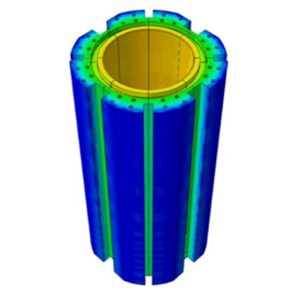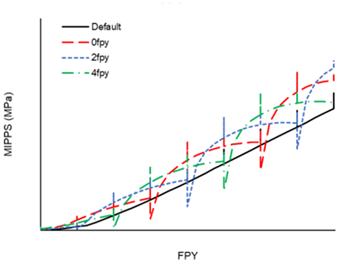Challenge
Production of low carbon electricity through operation of the Advanced Gas-cooled Reactors at Heysham 2 and Torness form a critical part of the UK government’s strategy for achieving its net zero and secure generation targets.
These reactors are operating beyond their intended design life and are experiencing ageing mechanisms which cause cracking and can affect the safe shut down of the reactors. EDF claim that the cracking mechanisms are understood and predictable, hence operation is safe.
To provide confidence, EDF routinely inspect the graphite cores to confirm the assumptions within their models. There is uncertainty in the degradation and inspections can reveal unexpected behaviour. The challenge is to understand whether these unexpected observations represent a challenge to the general understanding and hence safe operation.
In recent inspections the actual core degradation was at the high end of expectations, which has undermined confidence in EDF’s ability to respect safety case limits.
EDF claimed that the underprediction of cracking was due to their predictions not accounting for fuel age on graphite fuel brick stresses. EDF suggested fuel bricks in channels with older fuel could explain the underprediction of cracking observed during the graphite core inspections.
Our inspectors questioned EDF’s reasoning, unconvinced by their explanation, and sought out further independent advice to ensure judgements on continued operation were soundly based.
Research activity
Internationally recognised graphite experts from University of Manchester (UoM) and the Health and Safety Executive (HSE) have provided us with independent expert advice on subjects including graphite material behaviour, graphite weight loss and analysis techniques since 2003.
The UoM and HSE teams have developed a suite of analysis models which can quickly and effectively simulate the graphite core behaviour. This allows them to respond efficiently to our requests for independent and informed views on a host of graphite behaviour aspects and their potential causes and extent.
We commissioned a diverse investigation by utilising the material modelling expertise of UoM and the statistical data analysis expertise of HSE to investigate whether accounting for fuel age increased the likelihood of graphite fuel brick cracking.
Safety intelligence gained
The UoM team showed no obvious means to suggest that older fuel would lead to higher likelihood of cracking. Therefore, during refuelling, there appeared no reason to expect more cracking due to fuel age.
The HSE team did not identify any trends in the inspection data that would conclude the likelihood of cracking was higher in channels with older fuel.
The outcomes from the independent research allowed our inspectors construct a regulatory strategy and challenge EDF’s explanation for advanced core degradation. Through this advice we were able to engage with EDF to confirm the risks posed by prediction shortfalls were acceptable and that continued operation was safe.



Figures 1-3 have been taken from a presentation titled “Study of the Effect of Temperature Variations on Stress Profiles During Refuelling” by the Nuclear Graphite Research Group (University of Manchester), January 2025.